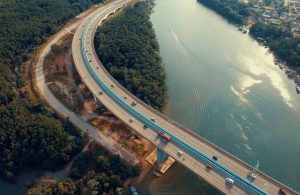
The Future of Water Technology in Agriculture | Increasing the quality and quantity of water supply
This article demonstrates several fundamental models that are making strides in the arena of natural and technological water supply solutions.

In 1802, Congress created the United States Army Corp of Engineers.1 By the 20th Century, the Corp had taken on the responsibility of managing and improving flood control and navigation, notably constructing the world’s longest networks of levees along the Mississippi River after the disastrous flood of 1927.2 It has been estimated that since 1928, the levee project has prevented over $100 billion in damages.3
Unfortunately, as society has evolved, the potential problems have also increased in complexity and severity. In the 21st century we are facing significant sea level rise and less frequent but more severe storms, and hazards are expected to intensify as we near the end of the century. To make matters worse, the National Research Council’s 2013 Report to Congress stated that the United States was $50 billion behind in the maintenance of its levee infrastructure.4 In order to minimize the impact of the impending climate dangers, it is imperative that the Army Corp of Engineers maintains and installs resilient measures.
The Corp’s infrastructure solutions, including those used in the Mississippi River Levee project, have historically been “gray,” meaning that they relied on impermeable concrete structures. “Gray” infrastructure approaches often rely on fixtures like drains, pumping, and collection systems. The 2013 report was indicative of the strain and resources required to maintain gray infrastructure, and many communities are beginning to push for change.
Portland, Oregon is a city on the cutting edge of change, and has committed to the implementation of “green” infrastructure.5 “Green”, or nature-based, infrastructure solutions require less maintenance work, provide long-term protection to communities, and can even be used to extend the longevity of existing aging traditional infrastructure projects.6 Portland utilizes green streets, ecoroofs, wetlands and many other methods to manage their stormwater, and improve and protect water quality.7 The incorporation of green infrastructure into the city’s planning also provides additional benefits to its inhabitants, including improved mental and physical health, and increased property value.8
It seems as though society may be starting to come around to a greener approach. In 2021, Miami-Dade County rejected a proposal by the US Army Corps of Engineers to build a flood protection system around Biscayne Bay in order to protect the area from hurricane storm surge.9 The proposed system was made up of a mile-long system of flood walls and gates along Biscayne Bay.10 Part of the basis for rejection was that the plan did not consider the potential negative impacts on the marine flora and fauna.11 Surprisingly, in 2022 the Corp agreed to revise the plan,12 and local stakeholders are holding out hope for a plan that is centered around nature and local needs.13
The recent change of heart for the Miami-Dade project is indicative of the fact that the Army Corps of Engineers has both the technology and the technical knowledge to implement green, nature-based solutions as part of its infrastructure maintenance and installation. It is necessary for communities to stay strong and continue to push for “green solutions,” and it is even more necessary for the Corp to not only incorporate green solutions into its wheelhouse, but to prioritize them when designing and planning projects. A sustainable future can be a resilient future, and the Army Corp of Engineers holds the key to large-scale implementation of “green” programs that will help keep our communities safe.

This article demonstrates several fundamental models that are making strides in the arena of natural and technological water supply solutions.

The Resilience Youth Network is excited to announce our partnership with the Natural Disasters Expo, an event that brings together experts and practitioners in the field of disaster preparedness and response in order to predict, prevent and manage natural disasters.
